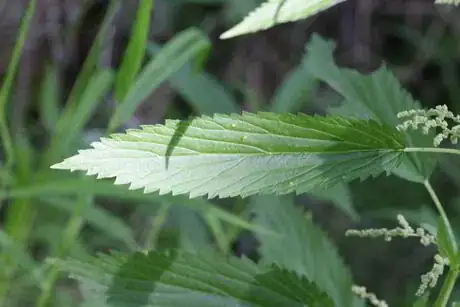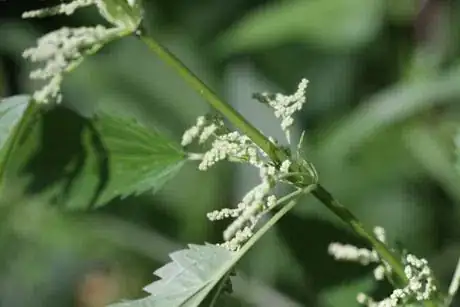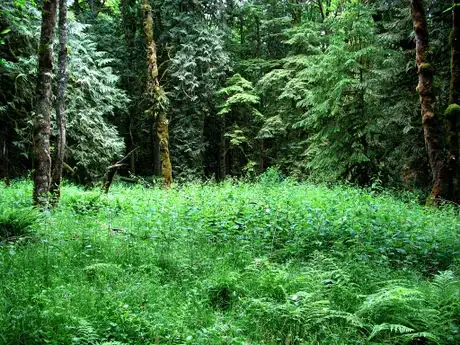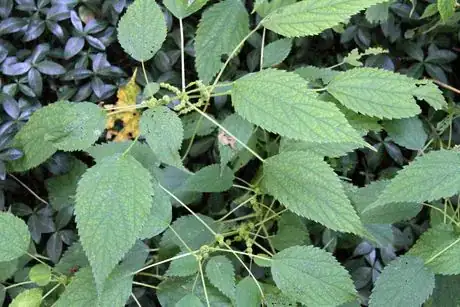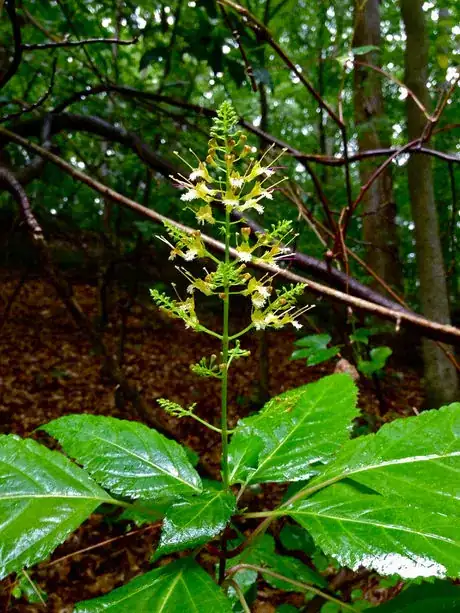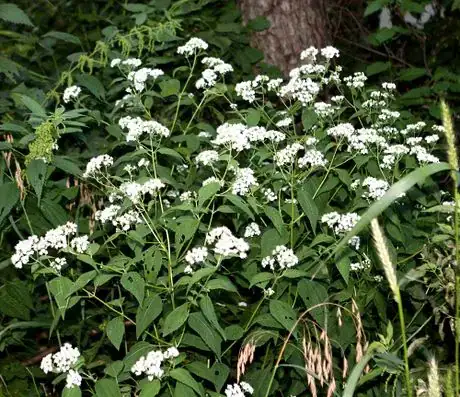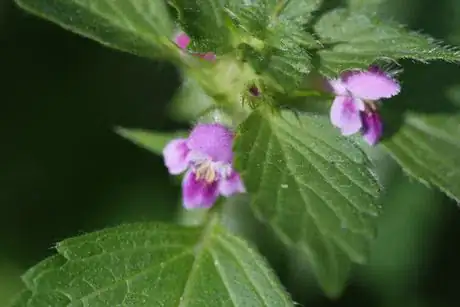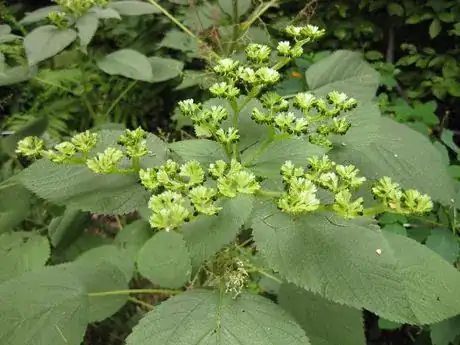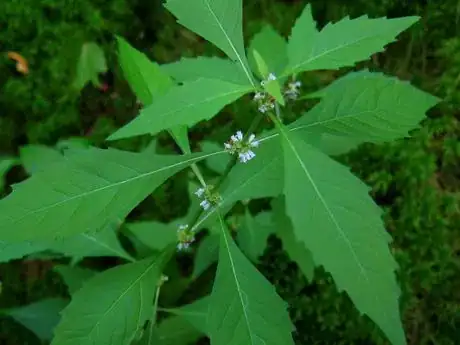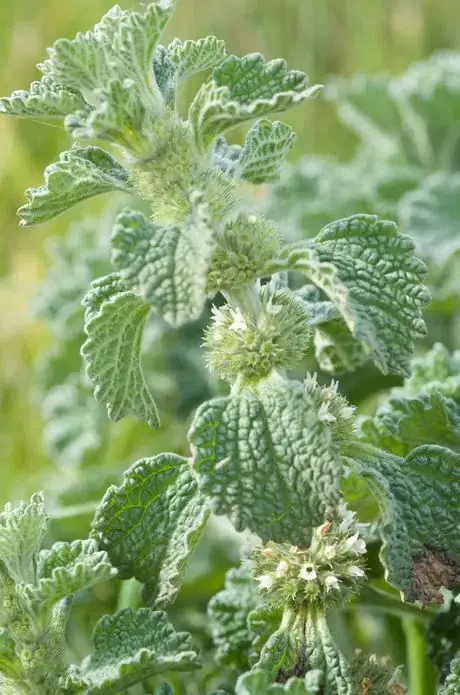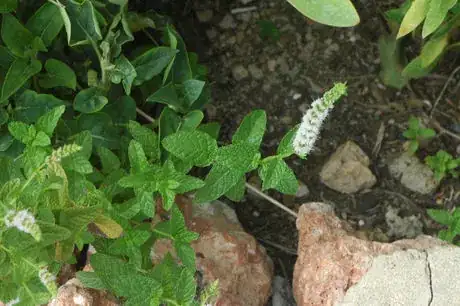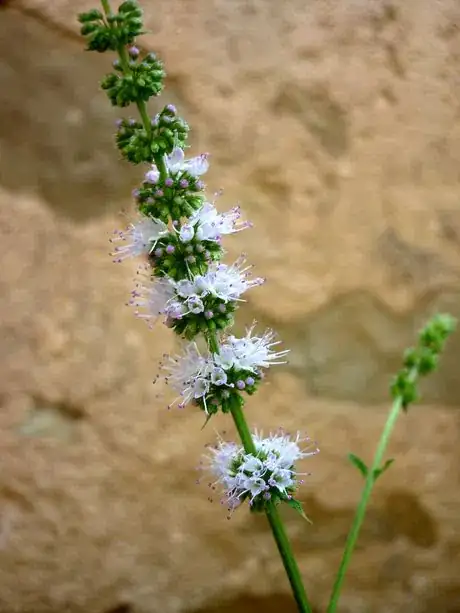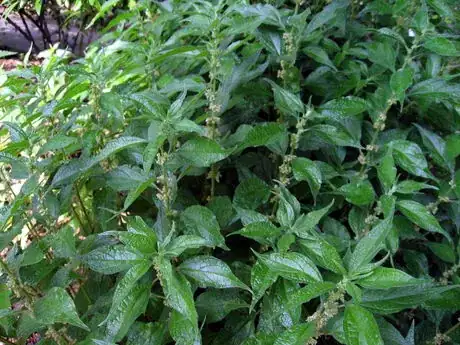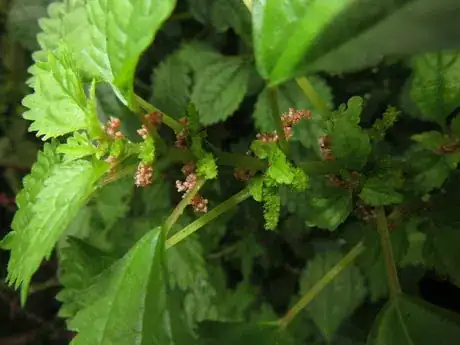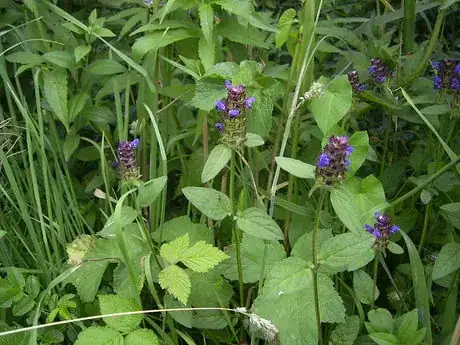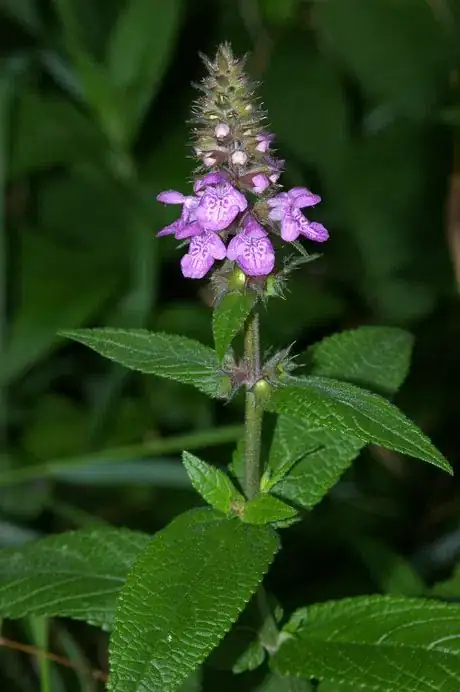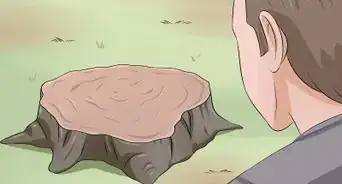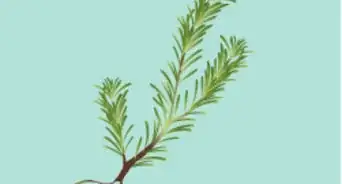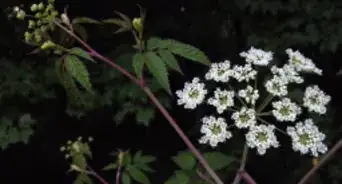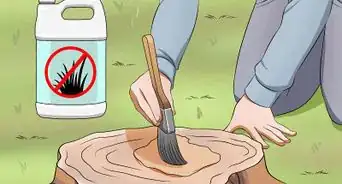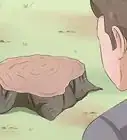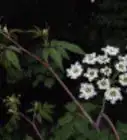wikiHow is a “wiki,” similar to Wikipedia, which means that many of our articles are co-written by multiple authors. To create this article, 21 people, some anonymous, worked to edit and improve it over time.
There are 16 references cited in this article, which can be found at the bottom of the page.
This article has been viewed 179,753 times.
Learn more...
Hundreds of species of plants that are commonly called "nettles" exist in the world, many which are named because of the similarity to a common weed known as Stinging Nettle or Common Nettle (Urtica dioica) by leaf shape, growth habit, or stinging ability thanks to the tiny needle-like hairs that exude a skin-irritant when touched.
Most people remember stinging nettles from the "bite" these plants cause when touched. This guide will help you identify what nettles look like so that you can avoid them the next time you may come across them.
Things You Should Know
- An image and information search of "Stinging Nettle" or Urtica dioica will give you a foundational understanding of stinging nettles and allow you to compare this plant to others you observe.
- Study the entire plant to identify stinging nettles: the stems, roots, leaves, flower clusters, etc.
- Be aware of similar species that aren't stinging nettles, like false nettles, horse balms, white snakeroots, and hemp nettles.
Steps
Identifying Stinging Nettle
-
1Do an image and information search on the Internet for "Stinging Nettle" or Urtica dioica. The latter name will give you the best results of what stinging (or common) nettle looks like in order to better help you identify the species out in the field. Also, some extra information to know may be useful:[1]
- U. dioica is known by several other common names, including "Common Nettle", "Bigsting Nettle", "Tall Nettle", and "Slender Nettle." There are actually 35 to 40 different species in the Urtica genus in Family Urticaceae.
- All true nettles are a part of the Nettle Family Urticaceae. There are many other species of plants with the common name "nettle" attached to it, but may not be part of the aforementioned taxonomical family. One such exemplary species is Hemp Nettle, Galeopsis tetrahit, which actually belongs to the Mint Family, Lamiaceae.
- It may be of interest to note that not all species of stinging nettle have literal stinging properties. There are six subspecies of stinging nettle, five of which have stinging properties. This species, along with its subspecies, is distributed all over the world, from Africa to Europe and in North and South America. Stinging nettle is native to western North America, Europe, Asia, northern Africa, and introduced elsewhere.
- The medicinal properties of nettles were first harnessed in medieval Europe. The plant has been shown to cleanse the body of metabolic waste and increase production of red blood cells. Even today, nettles are steamed and dried for stews and tea. However, this plant is often also seen as a noxious weed that dominates disturbed areas in or near forests, or in clearings with moist, fertile soil.
-
2Take a look at the entire plant. Stinging nettle is primarily single-stalked, and a perennial. A single plant you may find in an area will have been borne from a seed, whereas a group of plants are typically from rhizomatous colonies. The perennial nature of stinging nettle is due to the growth points found on these rhizomes.[2]Advertisement
-
3Look at the stems. Stinging nettle stems (singular, never branched) can get as tall as about 1.5 feet (0.46 m) to 9 feet (2.7 m). The stems are sharply angled (typically 4-angled), often with bristly-pubescent stinging hairs.[3] Occasionally the stems may be smooth.
- Some stinging nettle subspecies may have green stems, whereas other subspecies may have purple stems.
-
4Notice the type of root this plant has. The roots are predominantly rhizomatous, with a parent plant capable of creating large colonies that can expand up to 8.2 feet (2.5 m) in diameter per year. This rhizomatous nature can also make these plants quite long-lived. Some colonies have been found and estimated to be as much as 50 years old or more. While the plants themselves are not long lasting, it's the rhizomatous nature and the pink buds that form on the roots that allow it to proliferate.
-
5Study the leaves. Leaves are arranged as opposite on the stem. They are typically oval to lance-shaped and 2 inches (5.1 cm) to 4.5 inches (11 cm) long, and around 0.8 inches (2.0 cm) to 1.2 inches (3.0 cm) wide.[4] Both upper and lower surfaces of the leaves are covered in stinging hairs, and have coarsely serrated edges. The stipules (membraneous structures at the base of each leaf) are 0.2 inches (5.1 mm) to 0.5 inches (13 mm) long. Stalks are around 0.4 inches (10 mm) to 0.5 inches (13 mm) long.
-
6Look for the flower cluster of the plant. These branching clusters are borne on the axils of the leaves, and bear green flowers, with only sepals, no petals. The sepals are 0.04 inches (1.0 mm) to 0.08 inches (2.0 mm) long. These flowers come as two types: Male and female. Flowers are wind-pollinated.[5]
- Male flowers are typically greenish-yellow, with 4 sepals and 4 stamens.
- Female flowers are more green, with 4 pubescent (hairy) sepals and 1 pistil.
-
7Understand where you are most likely to find this plant. Stinging nettle is primarily found in moist wooded, open, and disturbed areas, including pastures, farmyards, and roadsides.[6]
-
8Use the steps above to distinguish from other similar species. The next part below shows some species that are commonly confused with U. diocia, from those related to a couple completely unrelated to this species.
Distinguish from Similar Species
-
1Take note of the several species that can be confused with Stinging Nettle. There are several different species found in many areas that can be easily mistaken for Stinging Nettle. Several of these are in the Urticaceae family, others are not. These similar species or look-a-likes include:
- False Nettle (Boehmeria cylindrica)
- Horsebalm (Collinsonia canadensis)
- White Snakeroot (Eupatorium rugosum)
- Hemp Nettle (Galeopsis tetrahit)
- White Deadnettle (Lamium album)
- Wood Nettle (Laportea canadensis)
- Northern Bugleweed (Lycopus uniflorus)
- Horehound (Marrubium vulgare)
- Spearmint (Mentha spicata)
- Upright Pellitory (Parietaria officinalis)
- Clearweed (Pilea pumila)
- Self Heal (Prunella vulgaris)
- Marsh Hedge Nettle (Stachys palustris)
-
2Distinguish from False Nettle (Boehmeria cylindrica). False nettle has finer toothed margins of the leaves, and the leaves themselves tend to be a little more bigger at the base. The stems of each flower cluster are erect and angle upward from the stem, unlike stinging nettle (which are droopy). There are no stinging hairs on any part of this plant. This is despite the fine hairs found on the leaves and stems.[7]
-
3Distinguish from Horse balm (Collinsonia canadensis). This plant is a part of the Mint family Lamiaceae. The plant grows to be about 2 feet (0.61 m) to 4 feet (1.2 m) in height, and the leaves are arranged opposite, like with stinging nettle. The leaves are serrated and oval, and large. It has a noticeable citronella-like odor. Flowers are in branched, terminal spikes, tubular in shape, and whitish yellow to yellow.[8]
-
4Distinguish from White Snakeroot (Eupatorium rugosum or Ageratina altissima). This plant is a member of the sunflower family (Asteraceae), therefore does not have stinging hairs. This plant is relatively shorter than stinging nettle, growing around 1.5 feet (0.46 m) to 3 feet (0.91 m) in height. Stems are light green to tan, and usually hairless. Leaves are larger than stinging nettle, about 5 inches (13 cm) long and about 3.5 inches (8.9 cm) wide, and are arranged alternate along the stem. Leaf size decreases as they ascend the stem. They are typically darker green on top (light below). Leaves have serrated edges, and heart-shaped near the bottom, and lance-shaped closer to the top. Flowers are white and divided into branching clusters primarily top of the plant, though some flowers also branch out from the base of the leaf.[9]
-
5Distinguish from Hemp Nettle (Galeopsis tetrahit). Hemp nettle, in some areas, can be easily confused with stinging nettle because it often grows in the same conditions, and is found in very similar locations as stinging nettle. However, this plant is introduced from Europe, and does it not typically have stinging hairs like the true nettle. Hemp nettle is also a part of Family Lamiaceae, not Urticaceae.
- Hemp nettle grows shorter than stinging nettle and also has bristly hairs on the stems and leaves. It also has typically wider leaves (though shape ranges from oval to lance-shaped), and has pink, white, or variegated flowers growing from the base of the leaf. The plant itself tends to be a little darker green than stinging nettle. This species is an annual that grows from seed spread from pre-existing hemp nettles, or deposited by animals, and human activity.
- Hemp nettle has been deemed a noxious weed in some parts of North America.
-
6Distinguish from White Deadnettle (Lamium album). A member of the Mint family (Lamiaceae) this perennial is native to Europe and introduced to North America. It is typically shorter than stinging nettle, growing only from around 1.5 feet (0.46 m) to 3.2 feet (0.98 m) tall. The leaves are arranged opposite to the stem, and both leaves and stems are covered in bristly hairs. Leaves are heart-shaped and oval, with larger tooth margins than that with stinging nettle. Flowers are noticeable, white, and arranged in a whorl at the axils of the leaves at the stem.
-
7Distinguish from Wood Nettle (Laportea canadensis). This plant also contains stinging properties like Stinging Nettle, and is in the same family (Urticaceae). Plants are generally shorter than stinging nettle, reaching only 4 feet (1.2 m) tall at the most. However, wood nettle is distinguished by its larger and wider leaves. These leaves are generally 6 inches (15 cm) long and about 4 inches (10 cm) wide. They appear almost egg-shaped or oval, though like stinging nettle has a sharp tip and is serrated at the edges. Leaves have a wrinkled appearance, especially at emergence; this becomes less so as the leaves reach maturity. Leaves are alternate along the stem, unlike stinging nettle which has opposite leaf arrangement.[10]
- Flower clusters are droopy like stinging nettle, but they are born on cymes (branching flower clusters) at the top of the plant. Male flowers are borne from the axils of the leaves, whereas female flowers are at the top of the plant. Wood nettle will have branching flower clusters at the top of the plant, unlike stinging nettle.
-
8Distinguish from Northern Bugleweed (Lycopus uniflorus). This plant is distinguished from stinging nettle by its shorter height (1 foot (0.30 m) to 2.5 feet (0.76 m) tall), and its leaves (opposite on the stem) and white flowers. The leaves are smaller, ranging from 1.5 inches (3.8 cm) to 4 inches (10 cm) long and about 0.5 inches (1.3 cm) to 1.5 inches (3.8 cm) wide. They are elliptic to broadly-elliptic in shape, and coarsely toothed, with 5 to 7 teeth along each leaf edge. Flowers are tiny, white, with 4 to 5 tiny lobes, and somewhat tubular.[11]
- Northern Bugleweed is non-stinging, and belongs in the mint family (Family Lamiaceae).
-
9Distinguish from Horehound (Marrubium vulgare). Also a member of the mint family Lamiaceae, horehound is distinguished from stinging nettle by its numerous bushy stems and wrinkled leaves. There is a whitish, woolly pubescence on both leaves and stems. Leaves are oval to egg-shaped. Whorls of white tubular flowers grow at the axils of the leaves. Horehound may be confused with stinging nettle when young; it takes about two years for plants to flower. The leaves have a pungent, bitter smell when crushed, but is a non-stinging plant.[12]
-
10Distinguish from Spearmint (Mentha spicata). Spearmint may be confused with stinging nettle at the pre-blooming stage. However, since the plant is largely hairless, and part of the Family Lamiaceae, it does not sting, and has a rather strong minty odour. This plant grows shorter than stinging nettle (only from 1 foot (0.30 m) to 2 feet (0.61 m) tall), and while the leaves are opposite, they are also smaller, more lanceolate or oval-shaped, and have toothed margins that point toward the leaf tips.[13]
- Flowers of spearmint are a light pinkish-purple. They are found at the top of the plant, and form in dense spikes of whorled flowers. Usually this inflorescence consists of a main, dense spike, and two smaller, lateral spikes.
-
11Distinguish from Upright Pellitory (Parietaria officinalis). Like stinging nettle, pellitory (or Pellitory-of-the-Wall, or Lichwort), is a part of the nettle family Urticaceae. But unlike stinging nettle, pellitory does not have stinging properties, despite having hairs on the leaves and stems. It also has smooth margins on the leaves, and a reddish stem. Pellitory has greenish flowers on the axils of the leaves, and the leaves are also opposite like with stinging nettle. However the flowers are in whorls on the stem, not drooping branches.
-
12Distinguish from Clearweed (Pilea pumila). This is a non-stinging annual that is a part of the Nettle family (Urticeae). The most interesting and defining characteristic of this plant is the translucency of the stems (particularly as plants get older, or as the growing season progresses), hence the common name. Stems may be reddish-green, grey-green or light-green in appearance. It grows shorter than stinging nettle (growing as high as only 0.5 feet (0.15 m) to 2 feet (0.61 m) tall), and leaves and stems are hairless, smooth, and with a shiny appearance. Leaves are smaller, 0.75 inches (1.9 cm) to 4 inches (10 cm) long and half as wide. Each leaf has a thin, membraneous texture (as in they feel smooth almost like human skin) with a prominent mid-vein and two visible side-veins, one on either side of that main vein. Clearweed leaves are more oval or ovate.[14]
- Flowers of clearweed are in narrow racemes that are shorter than stinging nettle, at only about 1 inch (2.5 cm) long. There is also some branching on each flowering stem.
-
13Distinguish from Self Heal (Prunella vulgaris). Self heal is distinguished from stinging nettle by the purple flowers that are in whorls on an upright stem, and the low-growing, relatively creeping nature of the plant. The leaves are broadly lance-shaped to oval shaped, and with smooth margins or with small toothed edges.[15]
-
14Distinguish from Marsh Hedge Nettle (Stachys palustris). This plant (a native to North America), a part of the mint family (Lamiaceae) can be fairly easily confused with stinging nettle when in the pre-blooming stage. Like stinging nettle, there are opposite leaves and pubescent or hairy leaves and stems. However, this species is noticeably more hairy than stinging nettle. Once it flowers, notice how it comes in a spike above the leaves, and the whorl of flowers are pink to pinkish-purple.[16]
Community Q&A
-
QuestionHow to prepare nettles to eat?
 Community AnswerYou can boil, sauté, or cook them.
Community AnswerYou can boil, sauté, or cook them. -
QuestionHow do you stop the sting of nettles?
 Community AnswerYou can either make a thick baking soda paste by mixing baking soda with water. Apply the paste to the affected areas. Or, you can rub the leaves of jewelweed on the affected area. Jewelweed is a small plant that usually grows around the nettles plant. If you do not have these materials on-hand, for immediate relief, human saliva can be applied to the affected area.
Community AnswerYou can either make a thick baking soda paste by mixing baking soda with water. Apply the paste to the affected areas. Or, you can rub the leaves of jewelweed on the affected area. Jewelweed is a small plant that usually grows around the nettles plant. If you do not have these materials on-hand, for immediate relief, human saliva can be applied to the affected area. -
QuestionHow many variety of nettle are there?
 Community AnswerBecause nettles grow very easily, there are many different varieties. It is a member of the Urticaceae family, which includes as many as 500 species worldwide.
Community AnswerBecause nettles grow very easily, there are many different varieties. It is a member of the Urticaceae family, which includes as many as 500 species worldwide.
Warnings
- Do not handle this plant without gloves. The tiny hairs on the leaves and stems of this plant can cause significant irritation and burning to any part of the body that comes in contact with this plant.⧼thumbs_response⧽
- Pets may have an allergic reaction to this plant if they come in contact with it, so due diligence is needed to keep them away and keep them safe. This plant has been known to be a leading cause of bacterial skin infections which can rapidly spread on the pet's skin in wet, humid and hot situations, which could lead to death if not treated immediately.⧼thumbs_response⧽
Things You'll Need
- Work gloves (rubber or leather)
References
- ↑ https://phc.amedd.army.mil/PHC%20Resource%20Library/StingingNettle_FS_18-086-0716.pdf
- ↑ https://www.dec.ny.gov/animals/105371.html
- ↑ https://www.wildlifetrusts.org/wildlife-explorer/wildflowers/stinging-nettle
- ↑ https://www.dec.ny.gov/animals/105371.html
- ↑ https://www.dec.ny.gov/animals/105371.html
- ↑ https://phc.amedd.army.mil/PHC%20Resource%20Library/StingingNettle_FS_18-086-0716.pdf
- ↑ https://www.illinoiswildflowers.info/woodland/plants/false_nettle.htm
- ↑ https://gobotany.nativeplanttrust.org/species/collinsonia/canadensis/
- ↑ https://www.missouribotanicalgarden.org/PlantFinder/PlantFinderDetails.aspx?kempercode=a747
- ↑ http://www.illinoiswildflowers.info/woodland/plants/wood_nettle.htm
- ↑ http://www.illinoiswildflowers.info/wetland/plants/north_bugle.html
- ↑ https://www.cabidigitallibrary.org/doi/10.1079/cabicompendium.119607
- ↑ https://www.illinoiswildflowers.info/weeds/plants/spearmint.html
- ↑ http://www.illinoiswildflowers.info/woodland/plants/clearweed.htm
- ↑ https://www.wildlifetrusts.org/wildlife-explorer/wildflowers/selfheal
- ↑ https://www.minnesotawildflowers.info/flower/marsh-hedge-nettle
- Tannas, K. 2003. Common Plants of the Western Rangelands: Volume 2: Forbs. Alberta Agriculture Publications Office, Edmonton, Alberta, Canada.
- Royer F., D. Dickinson. 2007. Plants of Alberta: Trees, Shrubs, Wildflowers, Ferns, Aquatic Plants & Grasses. Lone Pine Publishing, Edmonton, Alberta, Canada.
- Royer, F. 1999. Weeds of Canada and the Northern United States: A Guide for Identification. Lone Pine Publishing, Edmonton, Alberta, Canada.
About This Article
To identify stinging nettles, look for them in moist, wooded areas, like farmland, pastures, and roadsides. When you’re in these areas, search for a single-stalked plant with a sharply-angled stem, often lined with bristly, stinging hairs. However, some plants have smooth stems so you should also check for leaves that are long, with coarsely serrated edges and a pointed end. You’ll also notice tiny, stinging hairs on both the upper and undersides of the leaves. In between the leaves, look for clusters of small greenish or yellow-greenish flowers without petals. To learn more, like how to identify different species of stinging nettles, read on!
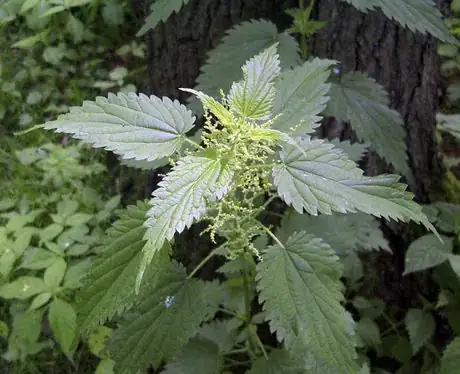
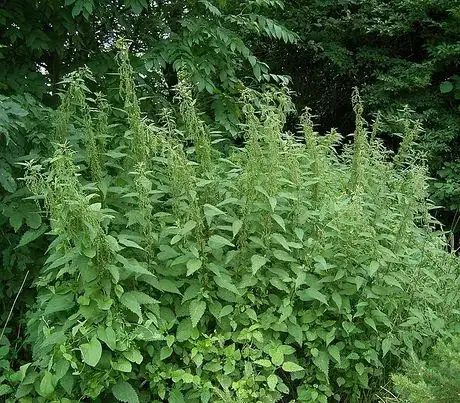
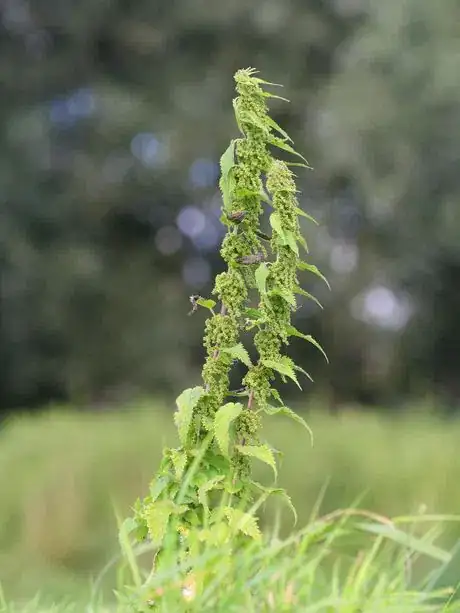
.webp)
